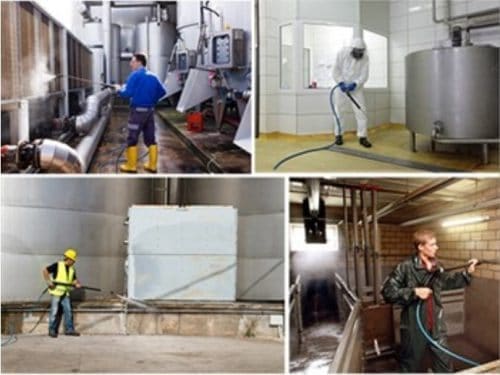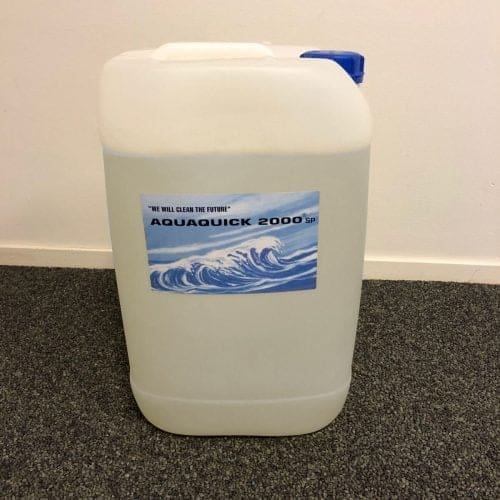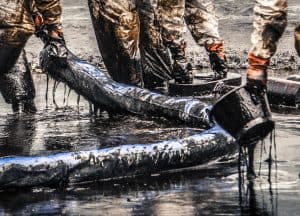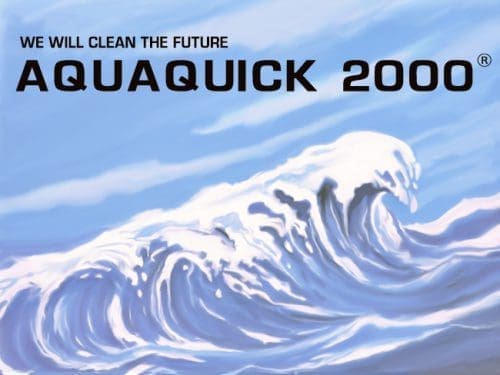保持油箱清洁对任何依赖燃料的车辆或机械的使用寿命和性能都至关重要。随着时间的推移,油箱中会积聚铁锈、油泥和碎屑等污染物,导致燃油效率低下、堵塞和燃油系统损坏。定期清洗油箱可确保发动机平稳运行,并从长远角度避免昂贵的维修费用。
为什么油箱会变脏?
油箱,尤其是金属油箱,很容易生锈和腐蚀。油箱内会形成冷凝水,从而导致生锈,特别是在老式车辆上。此外,燃料中的沉淀物和颗粒会积聚在油箱底部。这些污染物与燃油混合后会堵塞燃油过滤器、喷油器和化油器。如果不对油箱进行适当的清洁,这些碎片会对发动机造成严重损害。
油箱需要清洁的迹象
了解何时清洗油箱对于避免故障和保持性能至关重要。以下几个迹象表明,是彻底清洗油箱的时候了:
1.降低发动机性能
如果您的发动机运转不顺畅,或发现溅射或动力损失,可能是燃油中的污染物造成的。脏燃油会堵塞系统,降低燃油效率,导致发动机性能不佳。
2.燃料气味
强烈的燃油气味,尤其是在车辆不使用时,可能是燃油箱积聚了淤泥或碎屑的迹象。这可能表明需要对油箱进行清洗,以清除导致气味的污染物。
3.燃油过滤器堵塞
燃油过滤器的设计目的是在污染物进入发动机之前将其捕获。如果您需要经常更换燃油滤清器,可能是因为您的燃油箱中充满了杂物。在这种情况下 油箱清洗 可以通过消除堵塞的根本原因来帮助解决问题。
应该多久清洗一次油箱?
对于多久清洗一次油箱并没有统一的规定,因为清洗频率取决于燃料类型、使用情况以及车辆或设备的使用年限等因素。不过,一个好的经验法则是每隔 1-2 年,或每当您发现上述任何症状时,就进行一次油箱清洗。
对于在苛刻环境中使用或使用乙醇含量较高的燃料的车辆,可能需要更频繁地进行清洗。例如,柴油发动机更容易受到燃料污染,定期清洗油箱有助于避免昂贵的维修费用。

油箱清洁分步指南
清洗油箱可能是一项艰巨的任务,但只要有正确的工具和知识,就能高效完成。下面是彻底清洁油箱的分步指南:
1.收集必要材料
开始之前,请收集以下材料:
- 燃油虹吸泵
- 清洁液(如 AQUAQUICK 2000,专为安全有效的清洁而设计)
- 干净的布或抹布
- 安全护目镜和手套
- 用于排干燃料的大容器
- 用于擦洗的刷子或海绵
2.排空燃油
首先,您需要放掉油箱中的燃油。使用燃油虹吸泵将燃油转移到一个大容器中。确保在通风良好的地方进行,以免吸入烟雾。
3.卸下油箱
在大多数情况下,要有效地清洗油箱,需要将其从车辆上拆卸下来。请查阅车辆手册,了解如何安全拆卸油箱。在启动之前,请务必断开蓄电池,以防止任何电气危险。
4.清洁水箱内部
取下水箱后,在里面倒入少量清洁液。AQUAQUICK 2000 是一个不错的选择,因为它能有效分解污泥和污染物,而不会伤害水箱的材料。用海绵或刷子擦洗内部,特别注意有明显锈迹或碎屑的区域。
5.冲洗和擦干
擦洗水箱后,用清水彻底冲洗,清除清洁液的残留物。确保所有污染物都被冲走。清洗完毕后,用干净的布将水箱完全擦干或晾干。
6.重新安装油箱
待油箱干燥后,小心地将其重新安装到车辆上。确保所有连接牢固,并重新连接蓄电池。如果在此过程中拆下了燃油过滤器,请考虑在重新装入油箱之前更换一个新的过滤器。
7.给油箱注油
重新安装油箱后,应注入新鲜燃料。避免使用长期存放的燃油,因为其中可能含有污染物。此外,还可以考虑添加燃油稳定剂,以保持燃油清洁并防止日后积聚。
专业燃料 水箱清洗 与 DIY 清洁对比
虽然油箱清洗可以在家里完成,但在某些情况下可能需要专业人员的协助。例如,如果油箱腐蚀严重,或者如果您正在处理柴油等危险材料,那么聘请专业清洁服务可能会更安全。
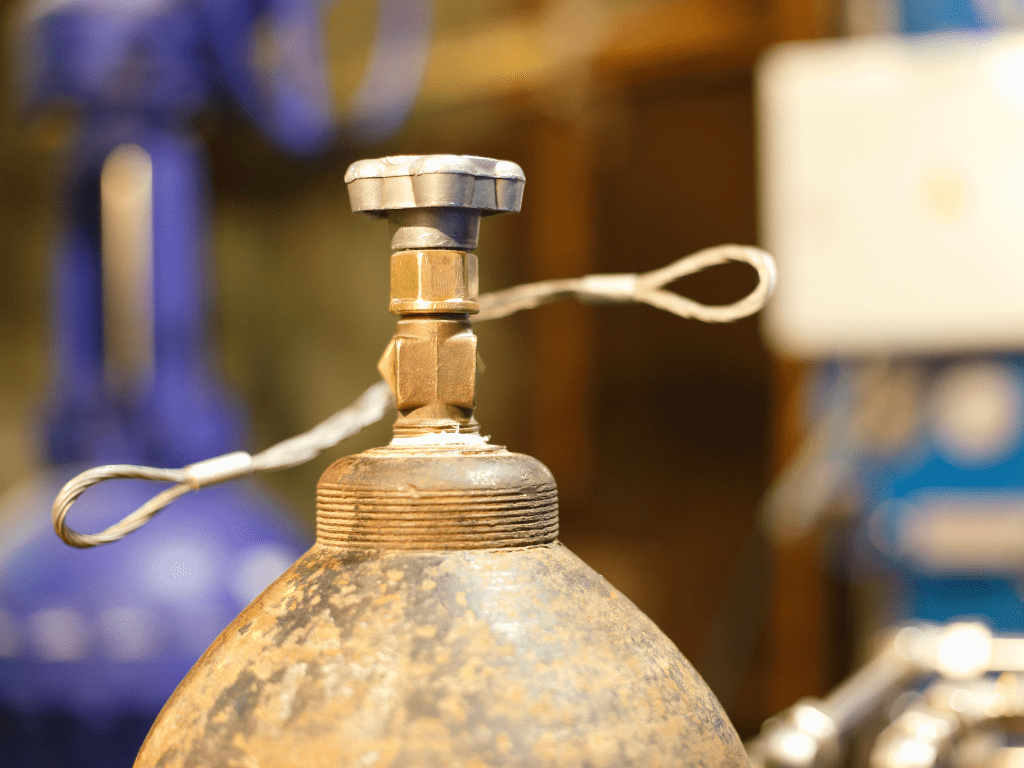
自己动手清洗油箱的优势
- 成本效益高: 节省人工成本
- 方便: 您可以按照自己的节奏进行清洁。
- 学习宝贵的技能 亲身体验车辆的燃油系统会让您受益匪浅。
专业清洁的优势
- 专用工具: 专业人员可以使用工业级设备和清洁剂,提供更深层次的清洁。
- 专长: 专业人员可以识别油箱或燃料系统中的潜在问题,这些问题可能是未经专业训练的人无法看到的。
- 安全: 如果要处理危险材料或损坏的油箱,专业服务可以安全地处理这种情况。
油箱维护的预防措施
定期维护可帮助您避免频繁 油箱清洗 并延长车辆或设备的使用寿命。以下是一些保持油箱良好状态的小窍门:
1.使用优质燃料
始终使用信誉良好的优质燃料。劣质燃料通常含有污染物,这些污染物会在油箱中长期积累,导致需要经常更换。 油箱清洗.
2.保持油箱满油
只要有可能,尽量保持油箱满载,尤其是在长时间存放车辆的情况下。满油箱可减少油箱内的空气量,防止凝结和生锈。
3.添加燃料稳定剂
可在油箱中添加 AQUAQUICK 2000 等燃油稳定剂,以防止油泥和其他污染物的堆积。这些产品有助于保持燃油清洁,并减少频繁加油的需要。 油箱清洗.
定期清洗油箱对环境的益处
常规 油箱清洗 不仅对您的车辆有益,对环境也有好处。清洁的油箱可确保发动机更高效地运转,从而降低油耗和排放。此外,妥善处理油箱中的污染物和油泥还能防止有害物质进入环境。
通过使用 AQUAQUICK 2000 等环保清洁产品,您可以确保您的 油箱清洗 过程既有效又环保。AQUAQUICK 2000 可生物降解且无毒,是清洗油箱的安全选择,不会对环境造成危害。
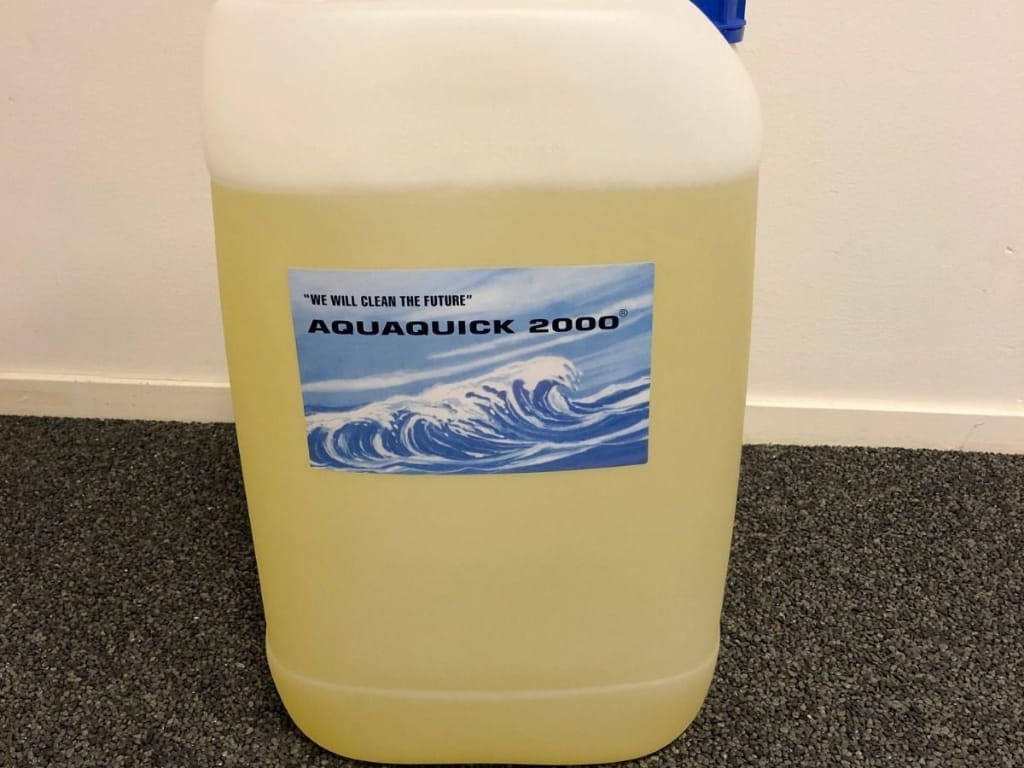
结论
保持油箱清洁对任何以燃油为动力的车辆或机械的性能和使用寿命都至关重要。定期清洗油箱不仅能提高发动机性能,还有助于避免昂贵的维修费用。无论您选择自己清洗油箱还是聘请专业人员,关键都在于坚持使用正确的清洗产品。
通过遵循本指南中概述的步骤并采取预防措施,您可以确保油箱保持最佳状态。切记使用 AQUAQUICK 2000 等优质产品,在不损害环境的情况下有效清洁和维护您的油箱。定期清洁不仅能为您省钱,还能减少您的碳足迹,实现车辆和地球的双赢。



